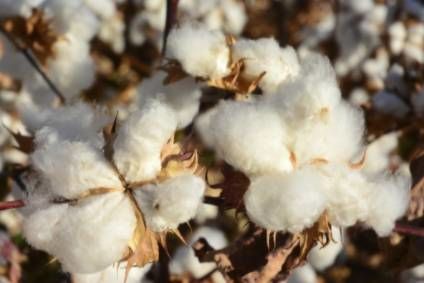
The potential impacts of the coronavirus represent a significant wildcard in the outlook for the world cotton market in the 2020 crop year, new data shows.
While the Phase 1 trade agreement between the US and China provided some cautious optimism for an improvement in the cotton economic situation, the coronavirus outbreak in the early weeks of 2020 could delay China’s ability to increase purchases in the near-term, the National Cotton Council (NCC) warns.
On 15 January, US President Donald Trump signed the Phase 1 trade agreement with China. As part of the agreement, China has agreed to purchase an average of US$40bn in US agricultural commodities, including cotton, over the next two years.
However, the NCC says the overall impact for cotton remains uncertain as commodity-specific details have not been released.
In her analysis of the NCC Annual Planting Intentions survey results, Dr Jody Campiche, the NCC’s vice president for economics and policy analysis, projects 2020 US cotton acreage to be 13m acres – 5.5% less than 2019.
The expected drop in acreage is the result of slightly weaker cotton prices relative to corn and soybeans. With abandonment assumed at 13.8% for the US, cotton belt harvested area totals 11.2m acres. US cottonseed production is projected to decrease to 6.1m tons in 2020.

US Tariffs are shifting - will you react or anticipate?
Don’t let policy changes catch you off guard. Stay proactive with real-time data and expert analysis.
By GlobalDataRegarding domestic mill cotton use, the NCC is projecting a slight decline in US mill use to 2.85m bales in the 2020 crop year.
“As one of the largest markets for US cotton, US mills continue to be critically important to the health of the cotton industry,” Campiche explains. “In the face of rising textile imports from Asian suppliers, the US textile industry has focused on new investment and technology adoption in order to remain competitive. The recently passed US-Mexico-Canada Agreement (USMCA) includes some important provisions that should help boost the US textile industry.”
Sales reached the highest level in the marketing year during the week ending on 6 February. While export competition from Brazil remains strong, the US has had increased opportunities for export sales to other markets in the 2019 crop year. Lower production in Australia, Pakistan, and Turkey has led to higher US export sales. As a result, the US will remain the largest exporter of cotton in 2019 with 16.5m bales.
Prior to the implementation of tariffs, the US was in a prime position to capitalise on the increase in Chinese cotton imports, according to NCC. With the imposition of the 25% tariff, China has turned to other suppliers during the 2018 and 2019 marketing years, allowing Brazil, Australia, and other countries to gain market share. Vietnam is currently the top export market for US cotton in the 2019 crop year, followed by China and Pakistan.
US exports, meanwhile, are projected to drop slightly to 16.4m bales in the 2020 marketing year. For this outlook, the US is assumed to export 2.5m bales to China in the 2020 crop year as compared to an estimated 2m bales in the 2019 crop year. However, with record stocks outside of China, increased production in Brazil, and a partial recovery in Australia’s production, the US will continue to face strong export competition in 2020. When combined with US mill use, total off-take falls short of expected production, and ending stocks are projected at 5.9m bales.
Campiche says world production is estimated to decline by 2.4m bales in 2020 to 118.9m as a result of lower cotton acreage. World mill use is projected to increase to 121.7m bales in 2020. Ending stocks are projected to decline by 2m bales in the 2020 marketing year to 80.1m bales, resulting in a stocks-to-use ratio of 66.4%. Stocks outside of China are projected to increase to a record level in 2020.




